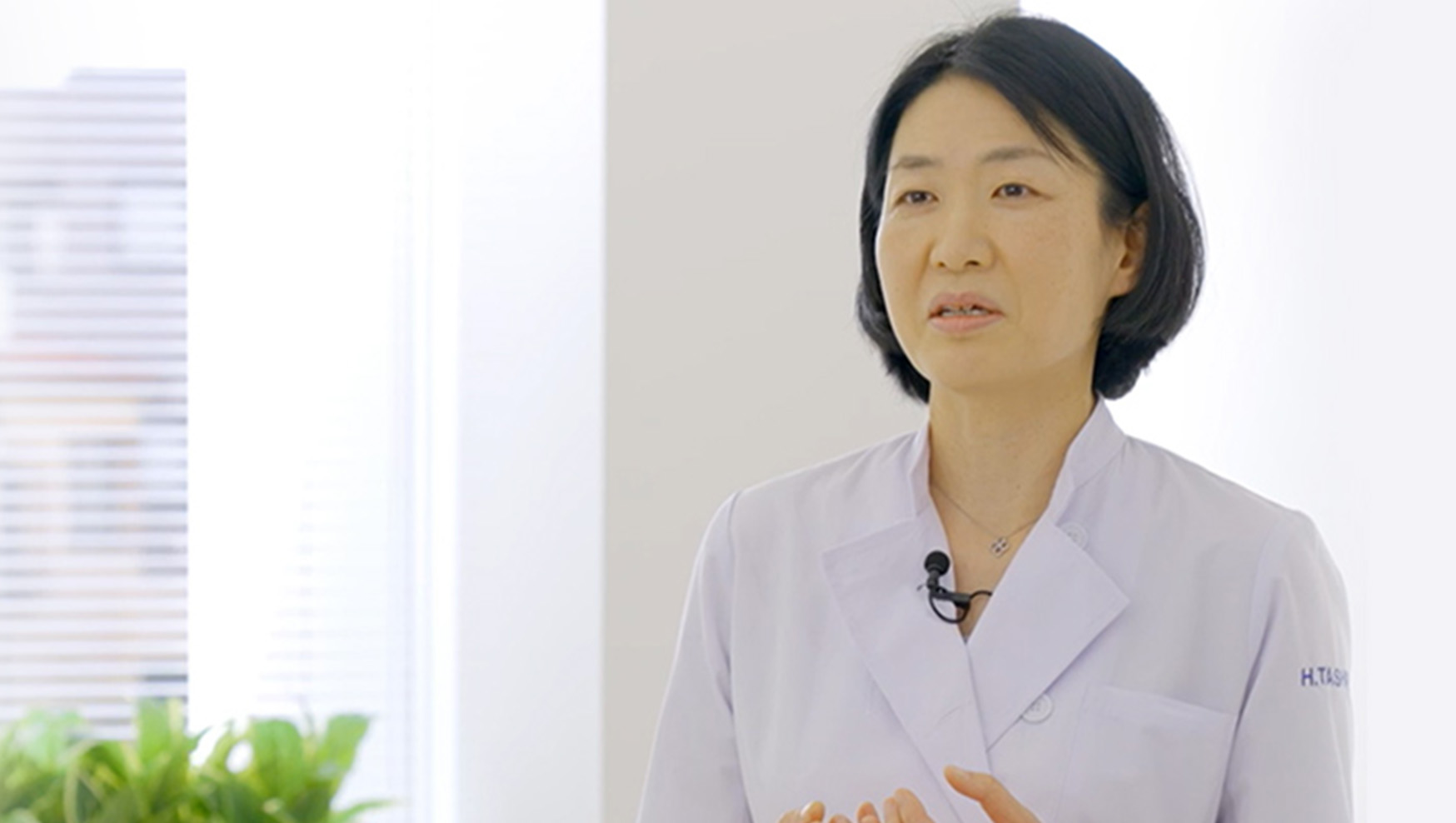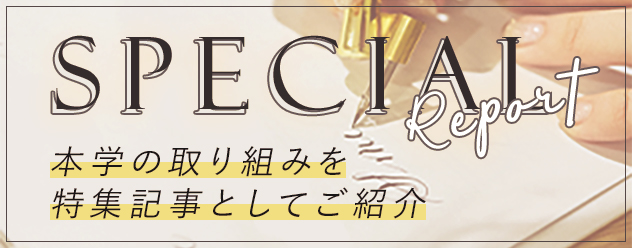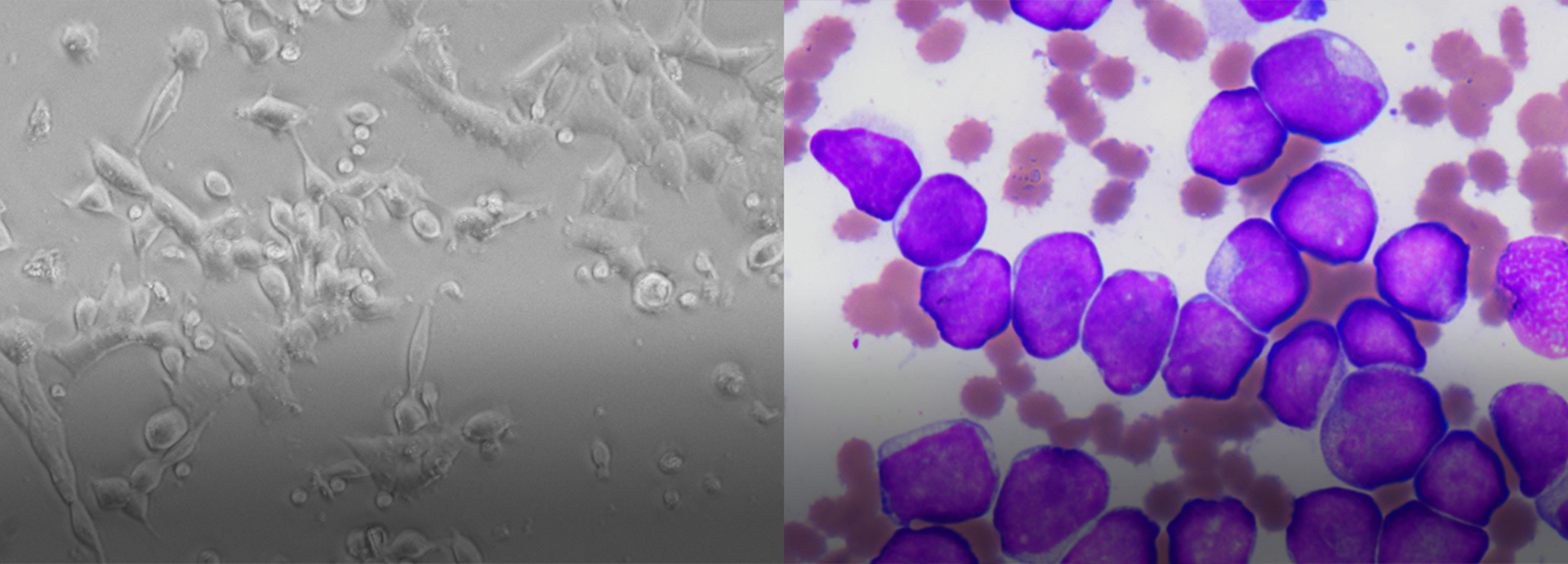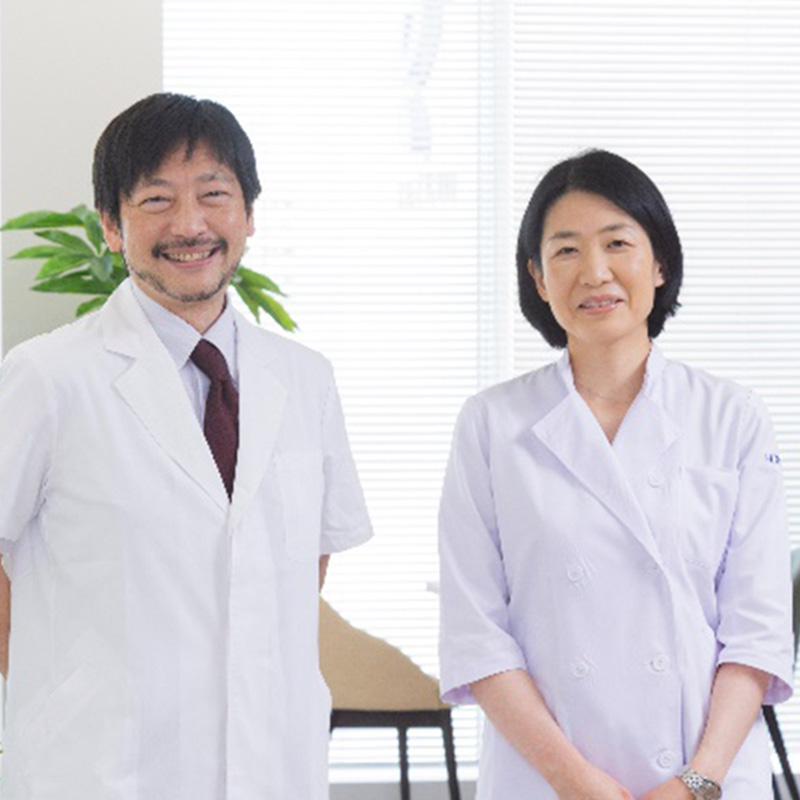In recent years, we have been developing new drugs targeting blood cancers such as acute myeloid leukemia and multiple myeloma.
Although many anti-cancer drugs have been developed, it is difficult to completely cure the disease.
The risks of recurrence and side effects from medication remain high.
Associate Professor Haruko Tashiro and Senior Assistant Professor Ryosuke Shirasaki of the Hematology Group/Laboratory, Department of Internal Medicine, Teikyo University School of Medicine,
While working on the front lines of clinical treatment,
We also conduct basic research to establish effective treatment methods that place minimal burden on patients.
Blood cancer that is still difficult to cure
Treat with the patient's own immune cells
Acute myeloid leukemia (AML), one of the blood cancers, is a disease in which immature cells before becoming mature cells become abnormal and become cancerous and proliferate abnormally, resulting in the inability to produce normal blood cells. Anticancer drug therapy is performed as standard treatment, but depending on the type of cancer, anticancer drugs may not be effective, and even if the drug is effective, it is difficult to completely cure. If possible, hematopoietic stem cell transplantation is performed, but there are many people who die from complications of the transplant or suffer from long-term side effects after the transplant.
Under such circumstances, CAR-T cell therapy is attracting attention as a new cancer treatment method. CAR-T cell therapy is approved for acute lymphocytic leukemia, malignant lymphoma, and multiple myeloma in Japan. is already being used in clinical practice.
Generation and administration of CAR-T cells
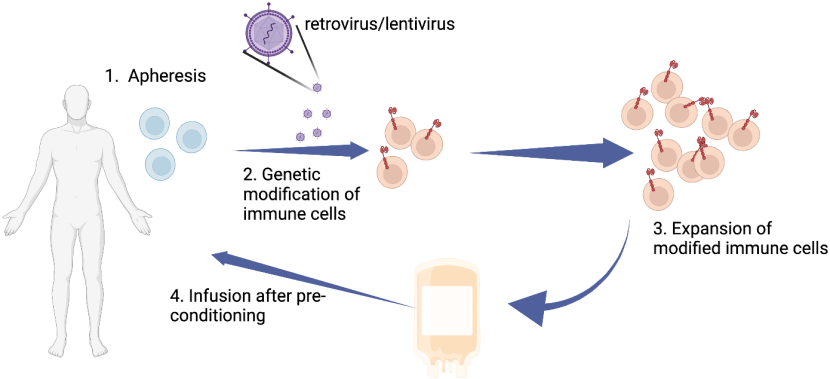
Express and increase CAR (Chimeric antigen receptor) with a binding site and return it to the patient's body
Suppression of AML cell growth by CLL-1 CAR-T cells
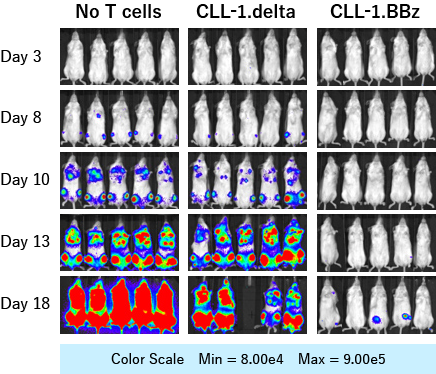
Mice treated with CLL-1 CAR-T cells showed no increase in cancer cells after 18 days
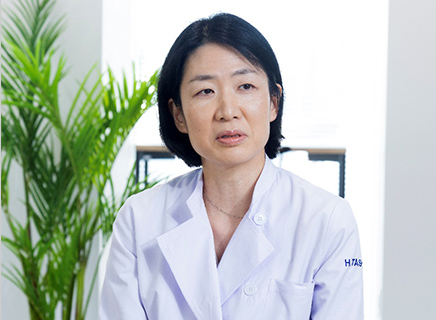
Associate Professor Tashiro is conducting research to establish CAR-T cell therapy that targets a protein called CLL-1, which is specifically expressed in AML cancer cells. "The most distinctive feature of CAR-T cell therapy is that it can attack cancer cells with the patient's own T cells, making it effective even in cases where drugs are ineffective or the cancer has relapsed after transplantation. There are several hurdles that must be cleared before CAR-T cells for AML can be applied clinically, but we are steadily working on each one," says Associate Professor Tashiro.
CAR-T cells are called "living drugs," and as long as even a small number of them remain viable in a patient's body, they can eradicate cancer cells the moment they threaten to recur. However, there is a problem in that T cells become fatigued and lose their effectiveness after fighting cancer cells for a long period of time, so Associate Professor Tashiro is trying to create CAR-T cells that can survive for as long as possible.
Analyzing tens of thousands of genes at once
Elucidating the mechanism of drug resistance
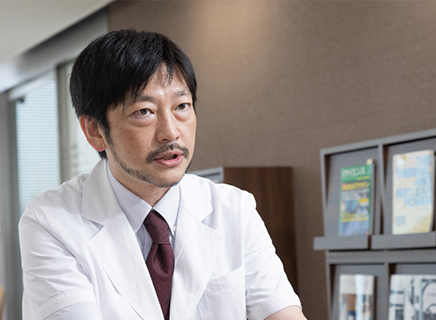
Senior Assistant Professor Shirasaki, who is conducting basic research with Associate Professor Tashiro to develop new treatments, specializes in multiple myeloma. Like AML, multiple myeloma is a blood cancer that is difficult to cure. It develops when antibody-producing cells called plasma cells, which are lymphocytes that have grown, proliferate. As this disease is common among elderly people over 70 years old, allogeneic transplants, as with AML, are rarely performed, and treatment mainly relies on anticancer drugs. However, as treatment continues, the cancer cells acquire drug resistance and the drugs become ineffective.
Rather than directly treating multiple myeloma, Senior Assistant Professor Shirasaki's research focuses on finding keys to improving treatment effectiveness. Using an experimental tool called "CRISPR screening," which he learned while studying in the United States, he analyzes tens of millions of cells to identify genes involved in drug resistance and treatment sensitivity. For example, he can identify which genes are causing resistance in cells treated with anti-cancer drugs, and then administer another drug (combination drug) that targets that gene to prolong the effectiveness of the anti-cancer drug.
Image of CRISPR screening
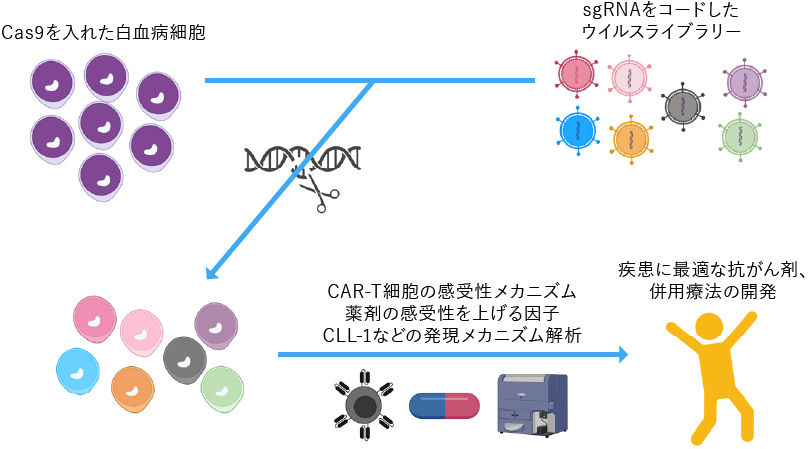
Find out which genes are involved in drug susceptibility and drug resistance
"There are not many facilities in Japan that perform CRISPR screening. After returning to Japan, I will use this tool to conduct analysis and try to elucidate the molecular mechanisms of drug resistance, which is extremely important in cancer treatment. I will also be looking for sensitivity factors in the CLL-1 CAR-T cells that Senior Assistant Professor Tashiro is researching, and investigating how CLL-1 is regulated within cells," says Shirasaki.
Senior Assistant Professor Shirasaki's research is effective in improving the effectiveness of treatments for all types of cancer, not just blood cancer, so he is conducting research in collaboration with the university's gynecology department and the hematology Internal Medicine of other universities.
Studying abroad led to basic research
Breakthrough in blood cancer treatment
Both Associate Professor Tashiro and Senior Assistant Professor Shirasaki are Internal Medicine who have treated patients with blood cancer. They currently conduct treatment and research in parallel, but they say that the reason they began basic research was because of the hardships they faced as Internal Medicine.
"I went abroad in my 13th year as a doctor. By that time, I had become capable of all the basics of a doctor, but I felt conflicted because while there were patients I could help with my treatment, there were also patients I could not save no matter how hard I tried. I began to feel burned out, and wanted to take a break from clinical practice, so I went abroad to study, and that's when I discovered CAR-T cells. Until then, I hadn't even heard of CAR-T cells, so I vividly remember being thrilled when I saw the CAR-T cells I had cultivated and created myself attack a tumor." (Associate Professor Tashiro)
While studying abroad, Associate Professor was given the mission of creating CAR-T cells for AML. He succeeded in creating CAR-T cells that target a protein called CLL-1, which is specifically expressed on AML cells. Since then, he has been working on research into CLL-1 CAR-T cells.
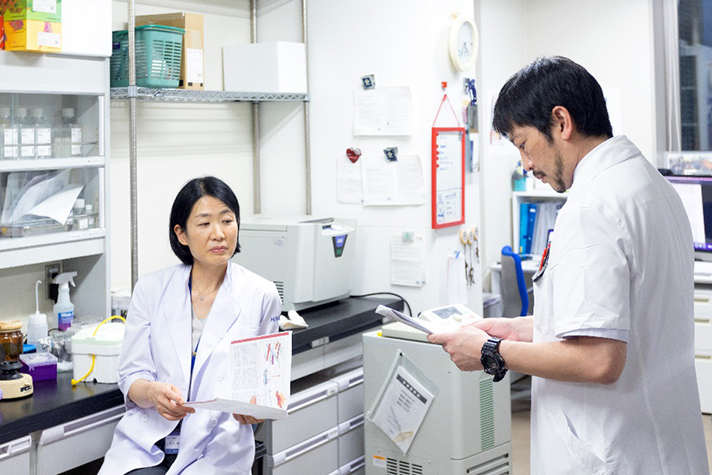
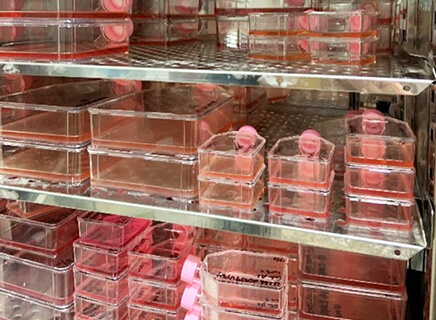
Senior Assistant Professor Shirasaki had been a doctor for about 10 years when he decided to study abroad. He also decided to do research at a time when he was struggling as a Internal Medicine.
"While working at the university hospital, I felt guilty about only doing clinical work. With the encouragement of those around me, I decided to take the plunge and focus on research abroad, and during my five years abroad I was able to immerse myself in my research. Initially, I wanted to study a different topic, but in the end I'm glad I studied CRISPR screening." (Senior Assistant Professor Shirasaki)
Cells and medicines do their best
Patients do not have to work hard
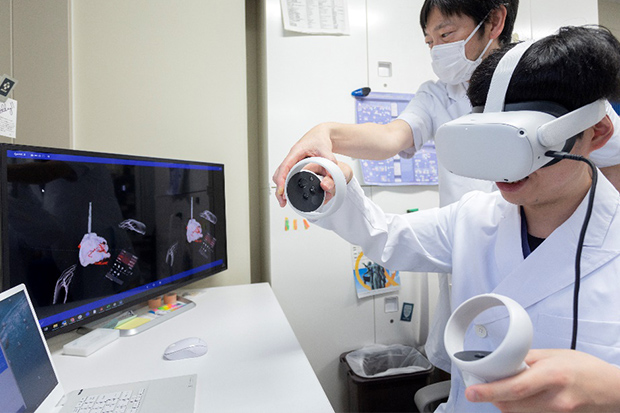
Neither AML nor multiple myeloma can be easily cured at present, but by continuing research, we aim to overcome these intractable blood cancers. Senior Assistant Professor Shirasaki's research has revealed that some drugs and foods that are not anti-cancer drugs already on the market can enhance the therapeutic effects of anti-cancer drugs. We will also clarify the mechanisms of drug resistance so that long-lasting therapeutic effects can be achieved.
"I always tell my patients, 'You don't have to try too hard.' It's the patient's own cells and the anti-cancer drugs that are working hard. I want to be the kind of doctor that patients don't try too hard to be, but can leave the rest to me and leave it to me." (Senior Assistant Professor Shirasaki)
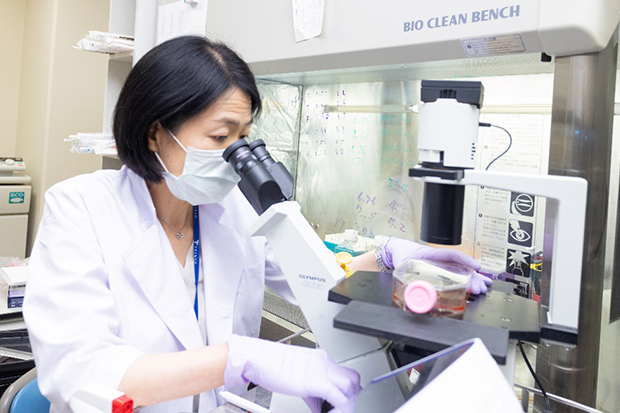
Associate Professor Tashiro's ultimate goal is to "treat blood cancer without the need for transplants." Associate Professor Tashiro is also a certified transplant physician and has saved many patients through transplant treatment, but at the same time, he is aware of the risks of transplant treatment. For this reason, establishing a treatment that can cure cancer without transplants is his fervent wish as a transplant physician.
"First of all, I would like to work with Dr. Shirasaki to make progress, even if only a little, toward establishing CAR-T therapy for AML. Although treatment does not necessarily mean that everyone will be cured, I always want to provide medical care that makes patients feel glad that they received treatment here," says Associate Professor Tashiro.
The Hematology Group/Laboratory was only established in April 2021, but is making steady progress, conducting joint research with other faculties on campus, other medical departments in School of Medicine, and companies. Driven by the desire to "save as many patients as possible," the group continues to strive to enrich both clinical practice and research.
